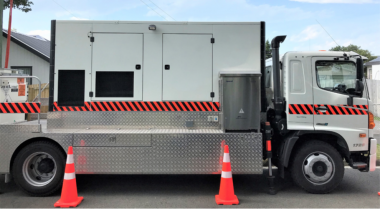Making a use case for STATCOMS

Why they're gaining traction among Kiwi EDBs
Managing voltage stability in a power system framework can be complex, as it often involves a list of ongoing and emerging energy challenges. Because of this, a growing number of New Zealand EDBs are looking at more versatile voltage stability management systems to ensure energy supply remains consistent.
Static Synchronous Compensators (STATCOMS) are growing in popularity. They're so-called because they don't have moving or rotating parts, while still providing a swift and step-less reactive compensation. STATCOMS are quick-to-implement, can help reduce reliance on costly and time-consuming mechanical processes, and can resolve detrimental voltage stability issues. Not only that, but they have enhanced power controllability, allowing them to inject a maximum reactive current even at a reduced system voltage.
STATCOMS have the ability to draw a capacitive or inductive current from the system by controlling the output voltage to be either higher or lower than the system voltage. They have an advantage over constant impedance devices (output decreases with voltage), in that they will continue to generate a maximum output current. They can do this at a low voltage because they're not dependent on passive reactive components.
STATCOMS make use of next-generation technology, and EDBs will benefit from them in several ways:
- Voltage support and regulation
- Wider operating voltage range
- Damping of system low frequency oscillations
- Swift response times
- The ability to mitigate for voltage fluctuation
- Increased distribution of line power transfer capacity
- Increased penetration of renewable energy generation
- Modular design
What it comes down to is that STATCOMS will significantly improve the transient behaviour of power systems, increasing their transmission capacity. They're also low-maintenance and generate a smaller footprint, since they replace passive banks of circuit elements by compact electronic converters — an environmentally friendly solution.
Although the advantages and benefits of STATCOMS are clear, they're not all created equal. EDBs need to know what to look for when assessing STATCOM bids and be able to recognise critical and beneficial features.
To help you with your purchasing decision, we've developed a white paper that outlines the key factors you need to consider. It covers:
- Construction techniques and materials — what to consider for most effective maintenance and longevity
- Technological innovation and product line variation — minute details make all the difference, find out what to ask
- Direct from manufacturer or distributor — does your provider have in-depth knowledge, technical understanding and geographic proximity?
- Potential challenges — have you factored location and its complexities into your purchasing decision making?
This is a technical white paper that looks at use cases, applications and market differences. There are a number of different options available, so it's important to do your due diligence so you invest in the one that will increase system longevity and overall project success.
If you're interested in learning more about finding the right STATCOM for your project and what considerations you need to keep in mind, download our guide to purchasing STATCOMS in New Zealand.

